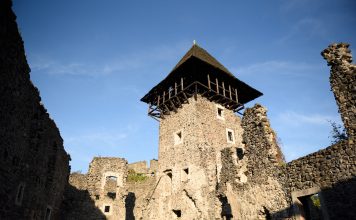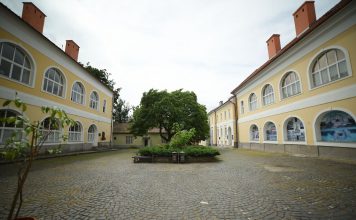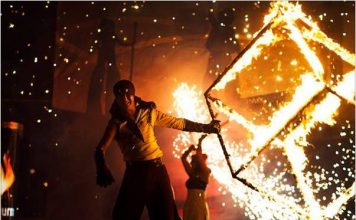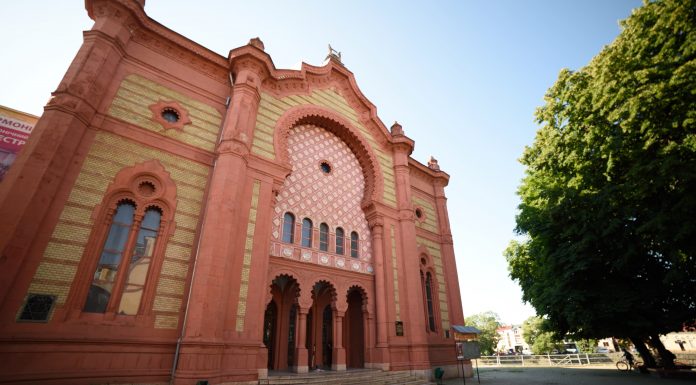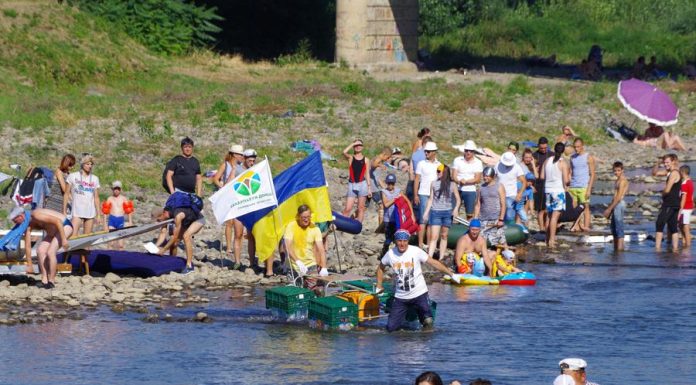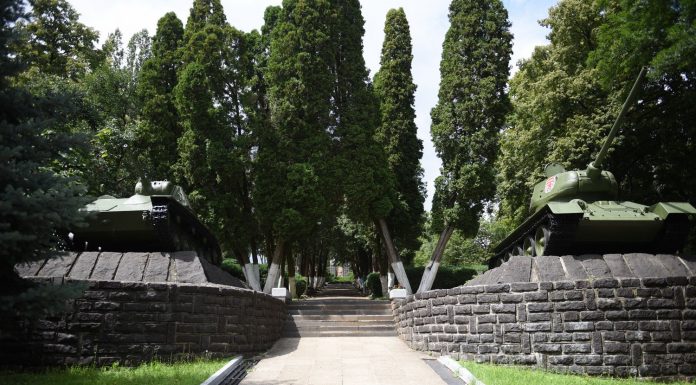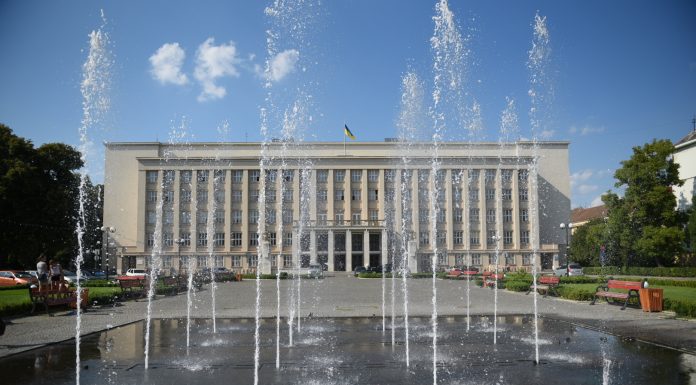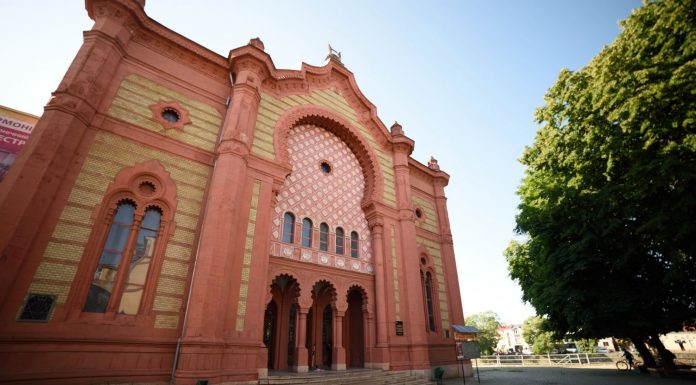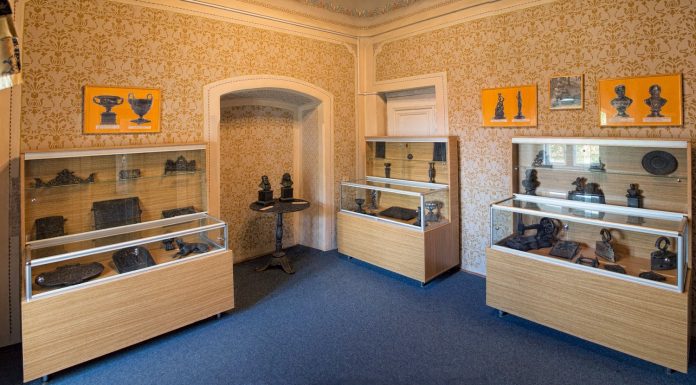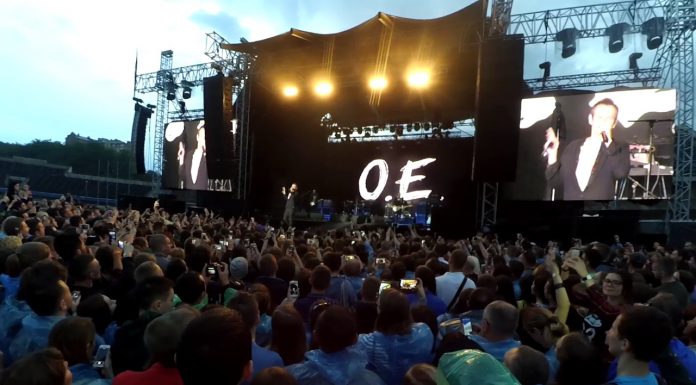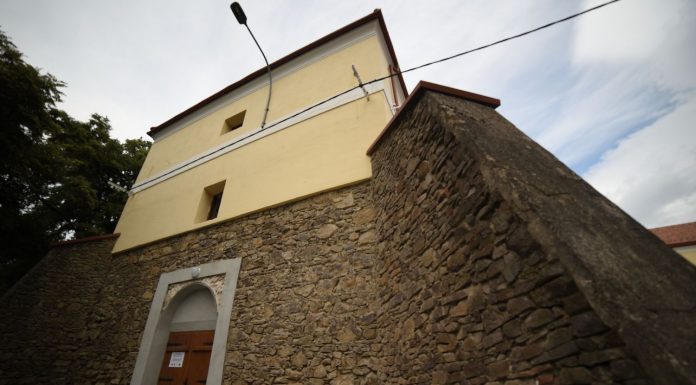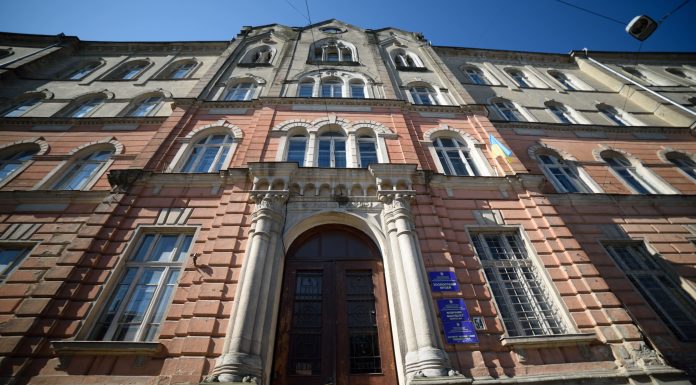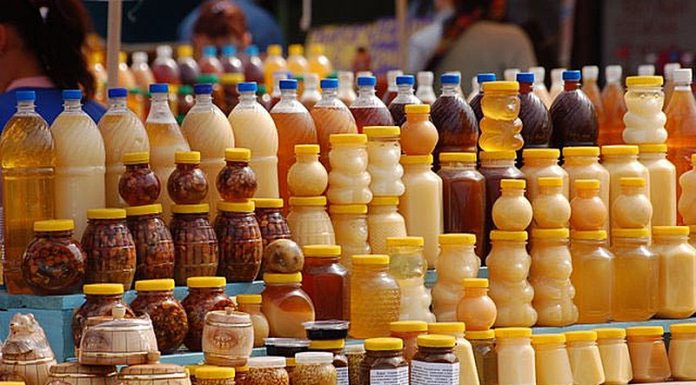Uzhgorod Synagogue was built as a Jewish choral synagogue of the Ashkenazi orthodox community in Uzhgorod. It was designed by architects Gyula Papp and Ferenc Szabolcs in Neo-Moorish style, which intertwines Byzantine and Arab-Moroccan motifs. It opened in 1904.
Currently, the building is used by the Transcarpathian Regional Philharmonic Society, founded in 1946. In 1974, one of the best stage...
The “Uzhhorod Regatta” is a fun sport competition, rafting down the Uzh river with unusual decorated crafts of various designs. According to tradition the launching takes place at the transport bridge near “Pidzamkoviy” park and heads down river to Tomas Masaryk transport bridge. In order to win, each team must purchase or build their own craft and all the...
The name “Calvary” is translated from the Latin as "a bowl of a corpse." It is considered as the cross of Christ, his torment that is why there are chapels on Calvary, symbolizing his way. The very first city cemetery, which appeared in the sixteenth century, was located in the modern Castle Hill. The castle servants and warriors were...
Dominated by the regional administration building at one end, since 1999 the square has been decorated with a large statue of Ukraine’s national poet, Taras Shevchenko. In 2001 a grass lawn was installed, with lights. In 2011 a fountain was re-installed. On the left side of the square, there’s a rose garden and right behind it is the building...
Transcarpathian regional Philharmonia was founded on 19 February, 1946. Philharmonia has located in the building of a former synagogue since 1957. Building of a synagogue was completed in 1904 designed by Transcarpathian architects F.Szabolcs and D. Pappa on the embankment of river Uzh. Calculation of works was 200000 korunas. It was the first reinforced concrete structure in Uzhgorod. The...
Since 1946 Transcarpathian Museum of local lore began to work in Uzhgorod Castle. "Exposition of nature department" provides physical and geographical characteristics of the Transcarpathian region, data on mountains, forests, flora and fauna and more."Exposition of archeology department" highlights the topic "Transcarpathia in the era of the ancient Stone Age, Paleolithic", "Transcarpathia in the era of New Stone Age,...
The material and spiritual culture of the city was formed under the influence of members of different ethnic groups living in the Carpathian region, including Hungarians, Czechs, Slovaks, Poles, Romanians, Germans and Jews. This vividly affected the development of arts, architecture, music and customs. As for painting, the Transcarpathian artists were influenced by Western schools.
Each year Transcarpathia holds more...
It was built in 1781. Initially building was used for storage of food and drinks, but after the elimination of factory’s equipment the brewery was turned into hotel, then into the specialized school and joiner school. After the reunification of Transcarpathia with Czechoslovakia, wine bar was opened in the "owl's nest". By the end of the 70s of last...
Vasilian monastery was built to educate Vasilian monks and Ukrainian children. Project of the building was developed by Uzhgorod architect Ernest Kovosh. Originally a monastery, whose facade overlooked the street, had four-storey central and side parts, where Hanging Gardens were situated.
It was the highest building in Uzhgorod till the First World War. In 1947 the building was transferred to...
Participants and guests of the celebration will try different varieties of honey and familiarise themselves with different bee products. In addition, guests can take part in contests like “Best honey expert” and "Bee Happy" for the best Bee costume. Winners will receive prizes and sweet honey treats. During the festival you’ll enjoy performances by local artistic groups and other...

